Text
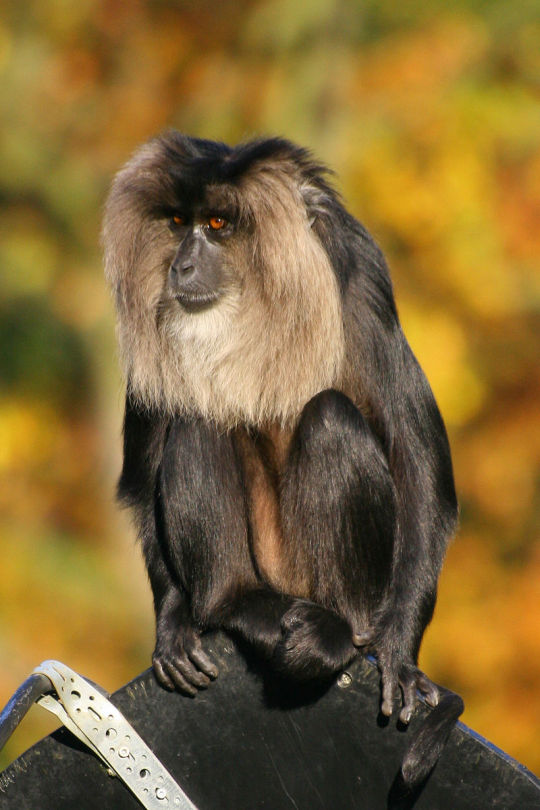


Lion-tailed macaque (Macaca silenus)
The lion-tailed macaque is an Old World monkey endemic to the Western Ghats of South India. The lion-tailed macaque is a rainforest dweller; it is diurnal, meaning it is active exclusively in daylight hours. It is a good climber and spends a majority of its life in the upper canopy of tropical moist evergreen forests. Unlike other macaques, it typically avoids humans when possible. Lion-tailed macaque behaviour is characterized by typical patterns such as arboreal living, selectively feeding on a large variety of fruit trees, large interindividual spaces while foraging, and time budgets with high proportion of time devoted to exploration and feeding.
photo credits: Wer-Al Zwowe, Nihaljabinedk, Kalyanvarma
#macaque#Lion-tailed macaque#Macaca silenus#monkey#animal wildlife#nature#cool critters#biodiversity
165 notes
·
View notes
Note
Do you think those cat/dogs learning to talk with buttons thing is actually accurate? I know even primates apparently dont know how to parse human words (with regards to sign language) so i struggle to understand why dogs or cats suddenly understand complex english
They don’t actually understand what the buttons mean. These animals aren’t capable of processing language like we humans do and they tend to react more to your tone and visual cues then the actual words you’re saying.
The buttons are just very basic operant conditioning. I very basic form of cognition in animals. They press the buttons because they are rewarded for doing so, not because they actually understand the meaning behind the buttons.

You can see in those videos (they do usually edit it out, but sometimes the creator of these videos just outright admits it) that it can take their pet something like 15 - 20 minutes to respond via the buttons.
Claims that the pets are asking questions ect. feel very staged / trained (like the below for example). Remember these videos are all coming from people on tiktok and people will do anything for a bit of internet fame. Scientific research has shown that dogs do not pass the “mirror test” but the mirror test is a very outdated way to show self-recognition in animals.

You compare this to the language studies done by Pepperberg with African Grey Parrots like Alex; in which they were able to ask questions they weren’t already trained to ask, form sentences they weren’t previously trained to do, display self-recognition (via asking what colour they were), could understand syntax and form their own words eg. Alex called apples “banerries”, a combination of "banana" and "cherry", two fruits he was more familiar with.

I prefer not to touch on koko the gorilla because that research is already pretty widely criticised with a lack of actual data, and there was evidence of the Clever Hans effect (her trainers' unconscious cues were prompting her to display specific signs).
17K notes
·
View notes
Text
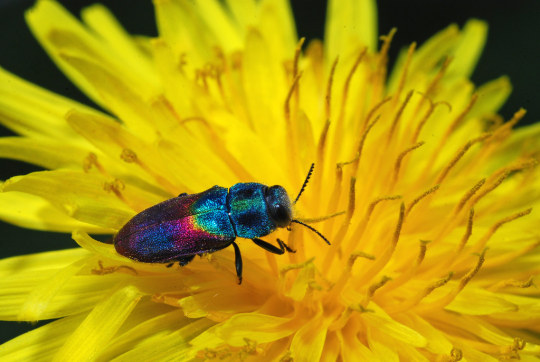

Anthaxia candens
Anthaxia candens is a jewel beetle. The biggest of its order in Europe.
photo credits:Jürgen Mangelsdorf, Udo Schmidt
265 notes
·
View notes
Text

Short-beaked common dolphin (Delphinus delphis)
The short-beaked common dolphin is a species of common dolphin. There are more short-beaked common dolphins than any other dolphin species in the warm-temperate portions of the Atlantic and Pacific Oceans. It is also found in the Caribbean and Mediterranean Seas. The short-beaked common dolphin is also abundant in the Black Sea, Gulf of Mexico, and Red Sea. They follow the gulf stream up to Norwegian waters. They are very social animals and engage in most necessary activities such as traveling, eating, and breathing together. They usually associate in groups that can consist of 1000s to 100,000s of individuals. When some individuals are sick, others in the group assist them by using their fins to help keep them afloat so they survive. The short-beaked common dolphin has a varied diet consisting of many species of fish and squid that live less than 200 metres deep.
photo credits: PROTECTED RESOURCES DIVISION PUBLIC PHOTO GALLERY
135 notes
·
View notes
Text

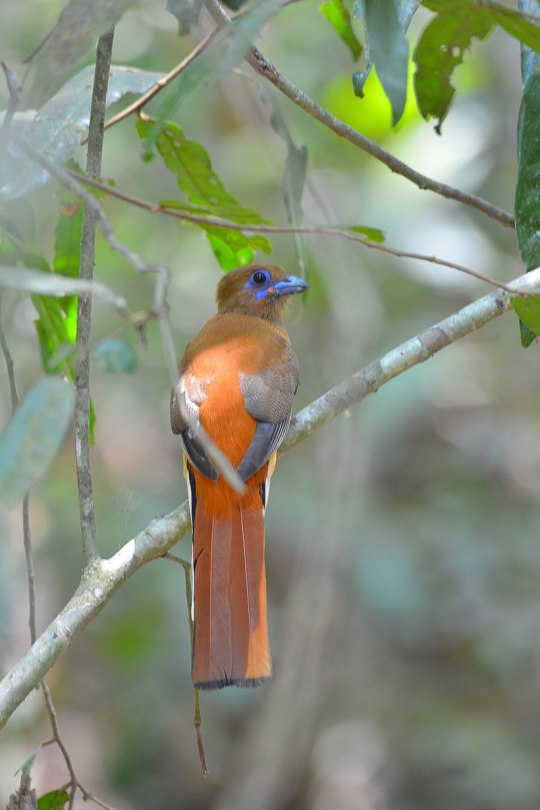
Malabar trogon (Harpactes fasciatus)
The Malabar trogon is a species of bird in the trogon family. It is found in the forests of Sri Lanka and peninsular India. In India it is mainly found in the Western Ghats, hill forests of central India and in parts of the Eastern Ghats. They are insectivorous and although not migratory, may move seasonally in response to rain in hill forest regions. Like in other trogons, males and females vary in plumage.
photo credits:Vinay bhat, Cks3976
172 notes
·
View notes
Text


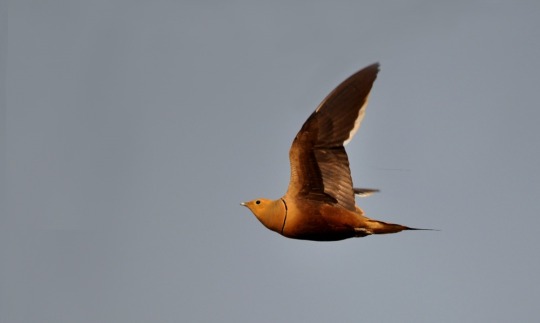
Chestnut-bellied sandgrouse (Pterocles exustus)
The chestnut-bellied sandgrouse is a species of sandgrouse. It is a sedentary and nomadic species that ranges from northern and central Africa and further east towards western and southern Asia. The chestnut-bellied sandgrouse is sexually dimorphic in plumage colouration. The chestnut-bellied sandgrouse is a bird of barren, semi-deserts. It is heavily reliant on water, despite living in hot, arid climates and is known to travel up to 80 km in a day to search for water. Chestnut-bellied sandgrouse are selective feeders which primarily subsist on seeds, often preferring to consume small seeds in large amounts.
photo credits: rainbirder, Arun Thangaraj,Seshadri.K.S
346 notes
·
View notes
Photo



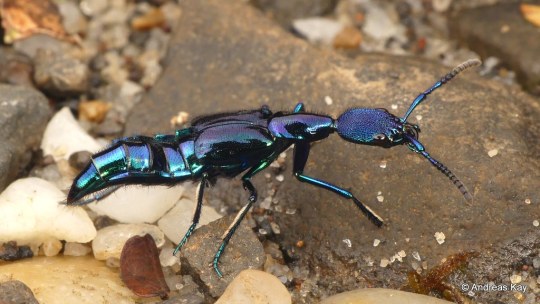

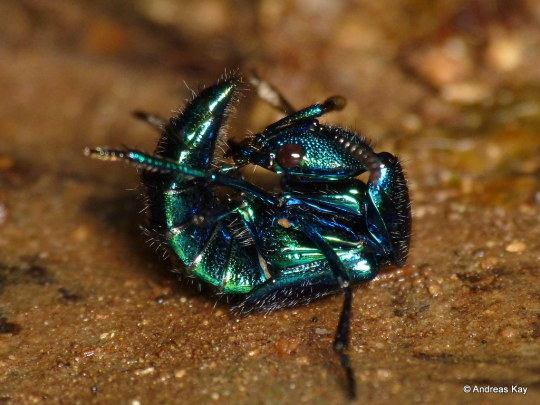




Jewel rove beetles in the genus Plochionocerus, Staphylinidae. Found from southern Mexico down through northern South America.
Photos 1-8 by Andreas Kay and 9-10 by sebastianberrio,
3K notes
·
View notes
Photo
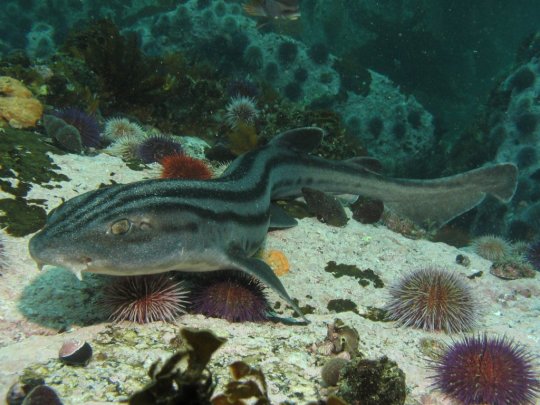

Pyjama shark (Poroderma africanum)
The pyjama shark is a species of catshark, and part of the family Scyliorhinidae, endemic to the coastal waters of South Africa. This abundant, bottom-dwelling species can be found from the intertidal zone to a depth of around 100 m, particularly over rocky reefs and kelp beds. With a series of thick, parallel, dark stripes running along its stout body, the pyjama shark has an unmistakable appearance. It can grow up to a length of 1.1 m long. The pyjama shark is primarily nocturnal, spending most of the day lying motionless and hidden in a cave or crevice or among vegetation. It often forms groups, particularly during summer. This species is an opportunistic predator that feeds on a wide variety of fishes and invertebrates; it favors cephalopods and frequents the spawning grounds of the chokka squid. When threatened, it curls into a circle with its tail covering its head. Reproduction is oviparous, with females laying rectangular, dark brown egg cases two at a time year-round.
photo credits: Guido Zsilavecz, Illustrations of the Zoology of South Africa
#pyjama shark#Poroderma africanum#shark#zoology#biology#biodiversity#science#wildlife#nature#animals#cool critters
1K notes
·
View notes
Photo
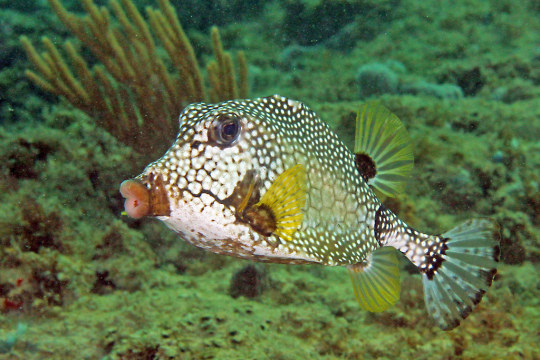
Smooth trunkfish (Lactophrys triqueter)
The smooth trunkfish is a species of boxfish found on and near reefs in the Caribbean Sea, Gulf of Mexico and subtropical parts of the western Atlantic Ocean. The smooth trunkfish has an angular body sheathed in plate-like scales, growing to a maximum length of 47 cm, though 20 cm is a more normal size. The smooth trunkfish is found down to a depth of about 50 m on coral reefs and over sandy seabeds. The smooth trunkfish is normally solitary but sometimes moves around in small groups. It uses its protuberant lips to expel a jet of water which disturbs the sandy seabed and reveals any shallowly buried benthic invertebrates. It feeds on small molluscs, polychaete worms, acorn worms, peanut worms, small crustaceans, sponges and tunicates.
photo credits: Kevin Bryant
#Smooth trunkfish#Lactophrys triqueter#fish#zoology#biology#biodiversity#science#wildlife#nature#animals#cool critters
359 notes
·
View notes
Photo




Loggerhead sea turtle (Caretta caretta)
The loggerhead sea turtle is a species of oceanic turtle distributed throughout the world. It is a marine reptile, belonging to the family Cheloniidae. The average loggerhead measures around 90 cm in carapace length when fully grown. The adult loggerhead sea turtle weighs approximately 135 kg, with the largest specimens weighing in at more than 450 kg. The skin ranges from yellow to brown in color, and the shell is typically reddish brown. The loggerhead sea turtle is found in the Atlantic, Pacific, and Indian Oceans, as well as the Mediterranean Sea. It spends most of its life in saltwater and estuarine habitats, with females briefly coming ashore to lay eggs. The loggerhead sea turtle is omnivorous, feeding mainly on bottom-dwelling invertebrates. Its large and powerful jaws serve as an effective tool for dismantling its prey. Young loggerheads are exploited by numerous predators; the eggs are especially vulnerable to terrestrial organisms. Once the turtles reach adulthood, their formidable size limits predation to large marine animals, such as sharks. The loggerhead sea turtle is considered a vulnerable species by the International Union for the Conservation of Nature. In total, 9 distinct population segments are under the protection of the Endangered Species Act of 1973, with 4 population segments classified as "threatened" and 5 classified as "endangered".
photo credits: Brian Gratwicke, Brian Gratwicke, Strobilomyces, Jean-Lou Justine
#Loggerhead sea turtle#Caretta caretta#turtle#zoology#biology#biodiversity#science#wildlife#nature#animals#cool critters
5K notes
·
View notes
Photo


Common Quaker (Orthosia cerasi)
The common Quaker is a moth of the family Noctuidae. It is distributed throughout Europe and is also found in Turkey, Israel, Transcaucasia, Russia and eastern Siberia. This is a variable species, the ground colour of the forewings ranging from greyish to orangey brown, sometimes with a broad dark band. The most distinctive features are two large stigmata, each edged by a narrow pale line, with a similarly coloured subterminal line.The wingspan is 34–40 mm. This moth flies at night in March and April and is attracted to light and sugar. The larva feeds on various trees and shrubs including apple, buckthorn, elm, oak, pear, poplar and willow as well as various Prunus species. The species overwinters as a pupa.
photo credits: Olaf Leillinger, Harald Süpfle
#Common Quaker#Orthosia cerasi#moth#zoology#biology#biodiversity#science#wildlife#nature#animals#cool critters
130 notes
·
View notes
Photo
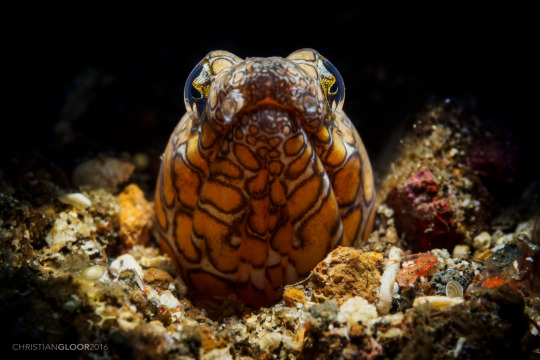
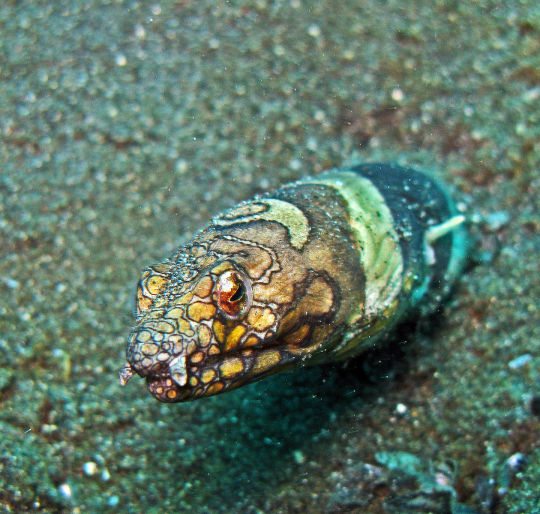
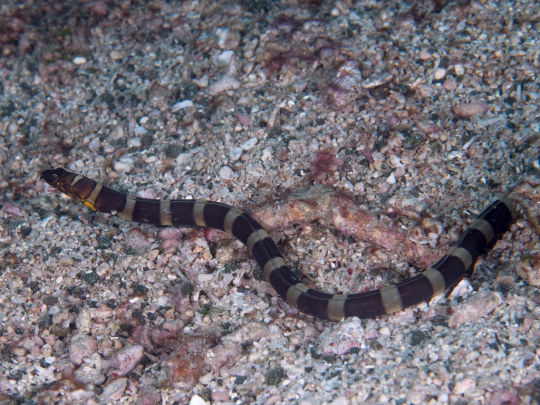
Napoleon snake eel (Ophichthus bonaparti)
The Napoleon snake eel is an eel in the family Ophichthidae (worm/snake eels). It is a marine, tropical eel which is known from the Indo-Pacific, including Durban, South Africa, Mauritius, Indonesia, Japan, Australia, and the Penghu Islands. It is known to dwell at a depth of 20 metres, and inhabits lagoons and reefs; it forms solitary burrows in sand sediments. Males can reach a maximum total length of 75 cm.
photo credits: Christian Gloor, divemecressi, Rickard Zerpe
#Napoleon snake eel#Ophichthus bonaparti#zoology#biology#biodiversity#science#wildlife#nature#animals#cool critters
410 notes
·
View notes
Photo

Lauriea siagiani
Lauriea siagiani is a species of squat lobster in the family Galatheidae, genus Lauriea. Lauriea siagiani is a small squat lobster, up to 7 mm long. Lauriea siagiani is found around the giant sponge Xestospongia testudinaria, and has been recorded from Indonesia, the Philippines and Japan.
photo credits: Elias Levy
664 notes
·
View notes
Photo
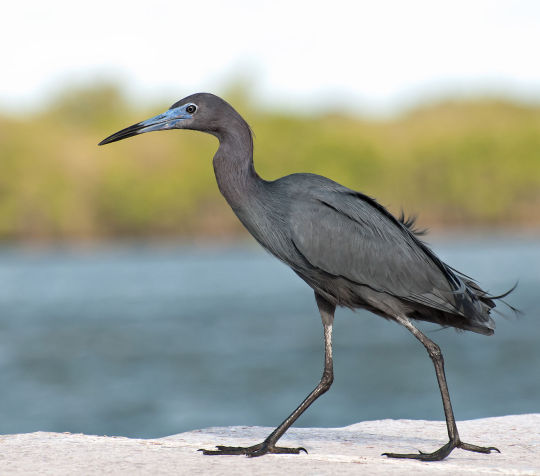

Little blue heron (Egretta caerulea)
The little blue heron is a small heron belonging to the family Ardeidae. These herons breed in the Gulf states of the United States, through Central America and the Caribbean south to Peru and Uruguay. It is a resident breeder in most of its range, but some northern breeders migrate to the southeastern US or beyond in winter. This species is about 64–76 cm long, with a 102 cm wingspan, and weighs 325 g.These herons prefer freshwater swamps and lagoons in the South, while on islands in the North they inhabit coastal thickets. They breed in sub-tropical and tropical swamps with mangrove vegetation, wetlands (bogs, fens, peatlands, etc.) and marine intertidal salt marshes. It eats fish, frogs, crustaceans, small rodents and insects.
photo credits: Dario Sanches , Sandhillcrane
#Little blue heron#Egretta caerulea#heron#zoology#biology#biodiversity#science#wildlife#nature#animals#cool critters
349 notes
·
View notes
Photo



Halfmoon angelfish (Pomacanthus maculosus)
The halfmoon angelfish is a marine angelfish. The species lives mainly in coral and rocky areas, in shallow to moderate depths, though it is more often in silty reef areas than in rich coral growth. This angelfish grows to a size of 50 cm in length. As with other large angelfish in genus Pomacanthus, juveniles and sub-adults are differently marked and colored than adults. Small halfmoon angelfish are alternately blue, white, and black banded. Pomacanthus maculosus is distributed throughout the Persian Gulf, the northwestern Indian Ocean, and the Red Sea south to 19°S. This species has a diet typical of angelfishes. Its main food is sponges. It also eats small anemones, algae, tubeworms, and shrimp.
photo credits: Heinz Albers, Petra Karstedt, Exaybachay
#Halfmoon angelfish#Pomacanthus maculosus#angelfish#zoology#biology#biodiversity#science#wildlife#nature#animals#cool critters
294 notes
·
View notes
Photo

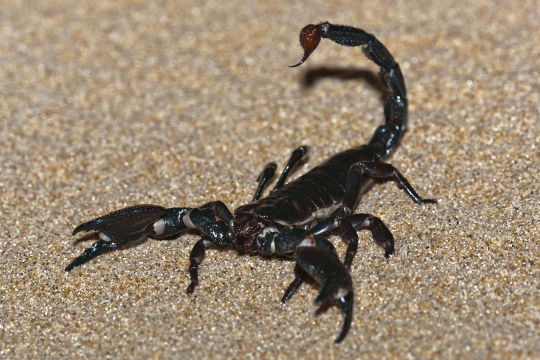
Emperor scorpion (Pandinus imperator)
The emperor scorpion is a species of scorpion native to rainforests and savannas in West Africa. It is one of the largest scorpions in the world, with adults averaging about 20 centimetres in length and a weight of 30 g, and lives for 6–8 years. Its body is black, but like other scorpions it glows pastel green or blue under ultraviolet light. It is a popular species in the pet trade, and is protected by CITES. Scorpion stings can be categorized as mild (similar to a bee sting) to severe to humans depending on the species. Most people are not affected by the emperor scorpion's sting, though some people may be allergic to scorpion stings in general. Sensory hairs cover the pincers and tail, enabling the emperor scorpion to detect prey through vibrations in the air and ground. They are known for their docile behavior and almost harmless sting; they do not use their sting to defend themselves when they are adults, however, they may use it in their adolescent stages. The emperor scorpion is an African rainforest species, but also present in savanna. This species inhabits both tropical forest and open savannas. The emperor scorpion burrows beneath the soil and hides beneath rocks and debris, and also often burrows in termite mounds. In the wild, emperor scorpions primarily consume insects and other terrestrial invertebrates, although termites constitute a large portion of their diet. Larger vertebrates, such as rodents and lizards, are occasionally eaten.
photo credits: Rosa Pineda, Mike Baird
#Emperor scorpion#Pandinus imperator#scorpion#zoology#biology#biodiversity#science#wildlife#nature#animals#cool critters
249 notes
·
View notes
Photo

Hildebrandt's starling (Lamprotornis hildebrandti)
Hildebrandt's starling is a species of starling in the family Sturnidae. Hildebrandt's starling is found in Kenya and Tanzania, where it occupies open country between 500 to 2,200 m. Its habitat is open woodland and open thornbrush country. Hildebrandt's starling is 18 cm in length and weighs 50 to 69 g. The diet of Hildebrandt's starling is a combination of insects and fruit, with insects apparently being the more important constituent. It usually feeds on the ground, in pairs and small flocks, and will readily follow large mammals and catch prey flushed by their movement. It also joins mixed flocks of other starlings.
photo credits: Noel Feans
#Hildebrandt's starling#Lamprotornis hildebrandti#bird#starling#zoology#biology#biodiversity#science#wildlife#nature#animals#cool critters
738 notes
·
View notes